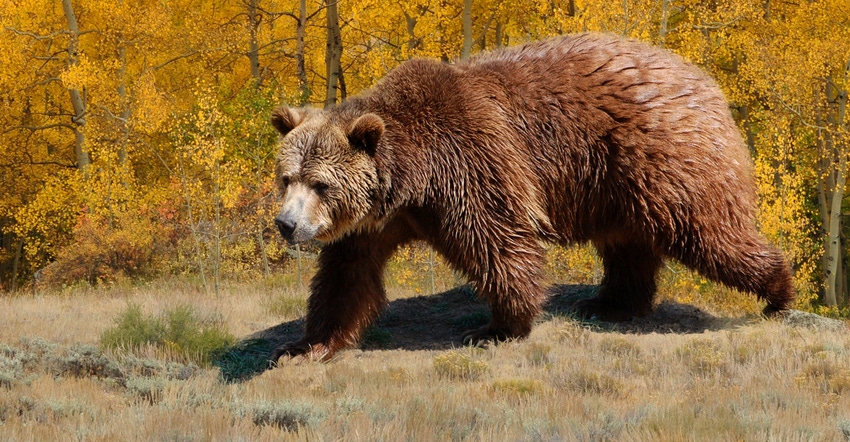July 31, 2020

One of the biggest, and considered most fierce, bears in the world depends on a tiny moth for sustenance. And that fact has an international team of researchers, led by a Washington State University graduate student, heading to the high peaks of the greater Glacier National Park area this summer to better understand a tiny but important food source for grizzly bears — the army cutworm moth.
Erik Peterson, a master’s student in WSU’s School of the Environment, partnered with WSU professor Daniel Thornton and seven colleagues to collect data on, and map and model, the alpine habitats where grizzlies forage on moths by the thousands to find calorie-rich meals in midsummer.
Peterson is a former field biologist for the park, and he notes the region is a mecca for grizzlies. Glacier is a microcosm for the Northern Continental Divide Ecosystem, which includes Waterton Lakes National Park in Alberta, and Akamina-Kishinena Provincial Park in British Columbia, and is home to as many as 1,000 bears.
Chowing down for winter
Grizzly bears eat up to 90 pounds of food daily during summer and fall to put on enough body fat for winter hibernation. They maximize body weight by choosing a mix of carbohydrates, protein and fats.
In the 1930s, park climbers noticed grizzlies foraging near the top of a high peak, digging for something among the barren rocky slopes. By the 1950s, biologists realized they were dining on army cutworm moths.
Farmers and ranchers know the army cutworm, which in its caterpillar state can devour key crops like corn, alfalfa and canola. In the high summer, adult moths migrate into the high mountain areas, where they feed on alpine wildflowers at night, and nestle in crevices on rocky talus slopes by day. They stay hidden from the sun and stay cool and safe.
Hungry bears know those crevices might contain tasty, fat-rich moths. According to WSU, on a pound-for-pound basis, army cutworm moths are as calorie-rich as a stick of butter.
Peterson says he thinks of the moths as “bear butter,” adding that “by August, the moths are about 70% body fat.” That puts them among the fattiest known species and makes it high time for bears to dig them up by the thousands every day, he notes.
Little is known about the alpine habitats that draw these moths. Peterson seeks to understand more about what happens in these high-alpine grizzly buffets.
The study at work
The study is being funded by the Glacier National Park Conservancy, a nonprofit fundraising partner. Peterson is finishing the second summer of a two-year study of grizzlies’ use of moth clusters. Technicians hired for the project this year will explore high-elevation rocky slopes from the ground, surveying moth habitat and collecting geospatial data.
Peterson explains: “We’re going to compare the sites where we find moths — and sign of bears feeding on them — to the places where we don’t, and try to understand what makes them different.”
He will be working with Two Bear Air Rescue to survey feeding grounds by helicopter, using thermal imaging to determine where and how many grizzlies use individual patches of moth habitat.
With Thornton’s guidance, the resulting scientific models will predict how these alpine habitats can support moths and grizzlies across the greater park ecosystem, potentially conserving an important food source for bears, as well as the apex predators themselves.
Bears have lived in Glacier National Park for millions of years (well before the park existed, of course), but their world is changing. Should a wild huckleberry crop fail, moths offer a better source of calories than a campground garbage can.
“Our goal is to develop a rigorous study that provides a better understanding of where and how grizzlies forage on this unique food resource,” Thornton says.
“That knowledge could be important to protect the future of grizzly bears as a species,” Peterson says.
Learn more about Peterson’s research into grizzlies and army cutworm moths at his team’s project website, bearbutter.org.
Source: Washington State University, which is solely responsible for the information provided and is wholly owned by the source. Informa Business Media and all its subsidiaries are not responsible for any of the content contained in this information asset.
You May Also Like




